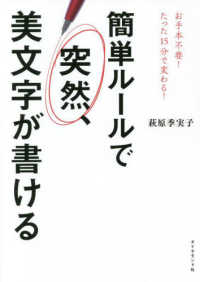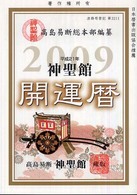- ホーム
- > 洋書
- > 英文書
- > Philosophy
Full Description
In this new book, David Harvey seeks to determine what is meant by the term in its different contexts and to identify how accurate and useful it is as a description of contemporary experience.
Contents
The argument. Preface.
Acknowledgements.
Part I: The Passage from Modernity to Postmodernity in Contemporary Culture: .
1. Introduction.
2. Modernity and Modernism.
3. Postmodernism.
4. Postmodernism in the City: Architecture and Urban Design.
5. Modernization.
6. POSTmodernISM or postMODERNism?.
Part II: The Political-Economic Transformation of late Twentieth-Century Capitalism: .
7. Introduction.
8. Fordism.
9. From Fordism to Flexible Accumulation.
10. Theorizing the Transition.
11. Flexible Accumulation - Solid Transformation or Temporary Fix?.
Part III: The Experience of Space and Time: .
12. Introduction.
13. Individual Spaces and Times in Social Life.
14. Time and Space as Sources of Social Power.
15. The Time and Space of the Enlightenment Project.
16. Time-space Compression and the Rise of Modernism as a Cultural Force.
17. Time-Space Compression and the Postmodern Condition.
18. Time and Space in the Postmodern Cinema.
Part IV: The Condition of Postmodernity:.
19. Postmodernity as a Historical Condition.
20. Economics with Mirrors.
21. Postmodernism as the Mirror of Mirrors.
22. Fordist Modernism versus Flexible Postmodernism, or the Interpenetration of Opposed Tendencies in Capitalism as a Whole.
23. The Transformative and Speculative Logic of Capital.
24. The Work of Art in an Age of Electronic Reproduction and Image Banks.
25. Responses to Time-Space Compression.
26. The Crisis of Historical Materialism.
27. Cracks in the Mirrors, Fusions at the Edges.
References.
Index.








